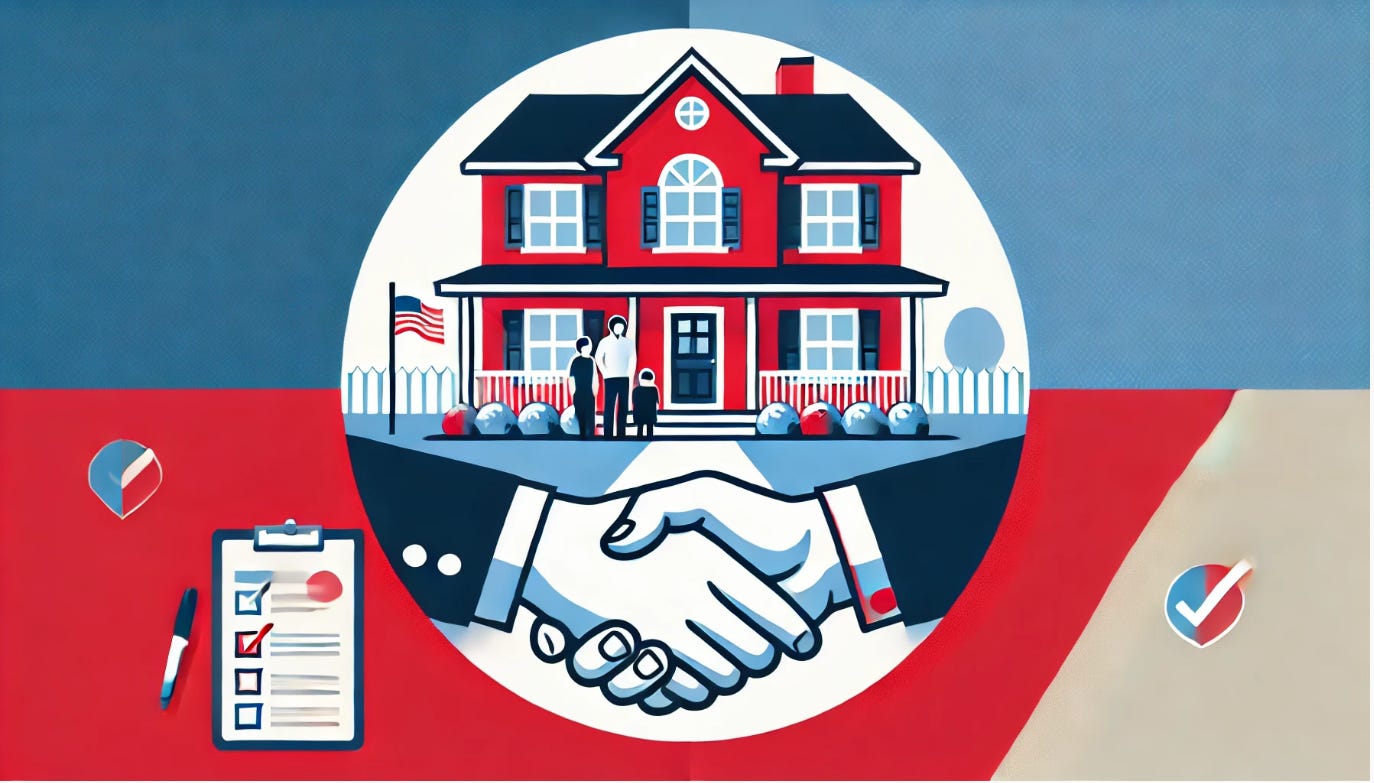The War on Institutional Investors in Housing
Why Politicians Are Attacking the Wrong Housing Problem
Hello Friends!
Check out my latest commentary on X, which makes the case against politicians pushing for legislation to stifle housing supply and demand by regulating or banning institutional investors. The problem is that this is just populist rhetoric without any facts to back it up. Leave a comment with your feedback.
The War on Institutional Investors: Why Politicians Are Attacking the Wrong Housing Problem
Affordable housing remains a critical issue for millions of Americans, yet some policymakers have latched onto a convenient scapegoat: professional ownership of single-family rentals.
From Washington to Austin, legislators are pushing bills penalizing institutional investors, claiming they are driving up housing costs and preventing homeownership. But the facts tell a different story—underscoring how professionally managed rental homes increase supply, provide quality housing, and support lower-income families.
The reality is that the footprint of large rental home investors is minimal.
Research from the Urban Reform Institute and the Texas Conservative Coalition Research Institute (TCCRI) confirm that institutional investors own only a fraction of the single-family rental market. Small landlords still own most rental homes, while the percentage of homes bought by larger investors remains in the single digits.
More importantly, these investors stepped in during the pandemic when demand for home purchases was weak. Many homeowners who needed to sell found buyers in professional investors who kept the market moving when traditional homebuyers hesitated.
Instead of reducing home availability, professional investors have increased the supply of quality rental housing.
The Urban Institute found that institutional investors typically purchase homes needing repairs and renovate them faster and more efficiently than individual buyers. This not only improves housing quality but also expands rental availability.
In places like Austin, where regulatory reforms have allowed for more housing density, rent prices have dropped by 22% in just a few years. The median rent has declined by $400 in less than three years to $1,399 monthly. This real-world example demonstrates how increasing housing supply—rather than restricting investment—leads to lower housing costs.
Unfortunately, Texas has recently been at the center of misguided legislative efforts to penalize professional investors.
House Bill HB 287 and Senate Bill SB 443, both introduced in the Texas Legislature, seek to impose restrictions on institutional ownership of single-family rentals. These proposals ignore that investors play a vital role in maintaining and expanding the rental housing supply. If enacted, these bills would drive up rental costs, reduce available housing, and potentially lead to forced evictions of families who rely on stable rental options.
If policymakers genuinely want to lower housing costs, they should focus on the root causes: excessive regulation, outdated zoning laws, and high property taxes.
The Joint Center for Housing Studies at Harvard found that median annual residential property tax payments for homeowners increased 17% from 2019 to 2023, disproportionately impacting low-income homeowners.
According to the Tax Foundation, another factor contributing to the housing affordability issue in Texas is the nation's seventh highest property tax burden, placing an undue burden on homeowners and renters alike. Meanwhile, in Dallas, Mayor Eric Johnson testified before the U.S. Senate that reducing government-imposed barriers—such as cutting permitting times from 68 to just 8 days—has been key to addressing affordability.
Efforts to cap or ban professional ownership of single-family rentals would limit renters’ options and displace families who cannot afford a home.
A study of Rotterdam’s investor ban found that it inflated rental prices by 4%, displacing lower-income individuals while attracting wealthier buyers. The Mercatus Center warns that limiting institutional investment could have tragic consequences, as large investors are often the only market segment capable of scaling up housing supply quickly.
This is particularly relevant considering that rental housing remains the most cost-effective option in most major cities. As of February 2024, the typical mortgage payment for a median-priced home was $2,703 monthly, while the average nationwide rent was $1,979. The financial burden of homeownership—including a median down payment of $67,500—makes renting the better and often the only choice for many families.
A common misconception is that institutional investors prevent first-time buyers from purchasing homes. However, The Hamilton Project found that professional investors do not compete directly with these buyers because they typically acquire homes needing repairs—homes that first-time buyers often cannot afford to renovate.
Furthermore, 67% of homes in Atlanta remain owner-occupied, exceeding the national average and disproving claims that institutional investment crowds out buyers. Most institutional investment in single-family rentals is done by small-scale investors, not hedge funds or Wall Street conglomerates.
America’s housing crisis won’t be solved by demonizing investors who help expand and maintain the rental market. Instead, policymakers should embrace market-driven solutions that increase supply, lower regulatory barriers, and encourage responsible investment in housing.
Taxing professional landlords out of the market will only shrink the pool of available homes, making it harder—not easier—for families to find affordable places to live. The focus should be on cutting red tape, reducing minimum lot sizes, slashing property tax burdens, and rejecting harmful bills like HB 287 and SB 443 that would only make housing more expensive and less available for Texans.



